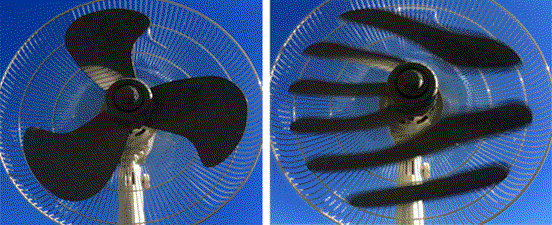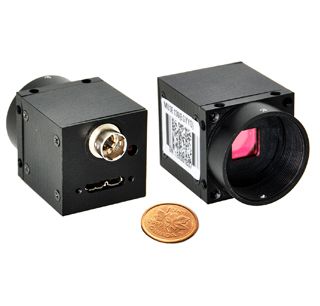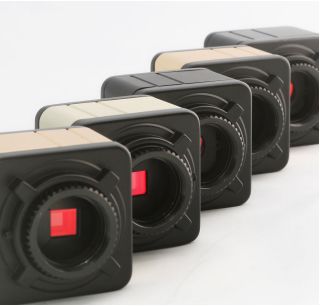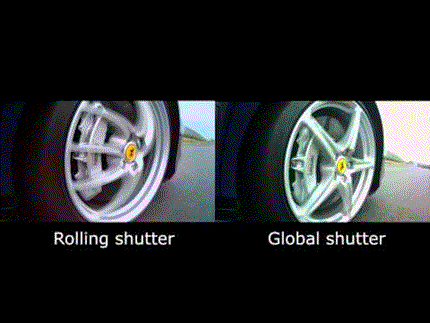This article compares the advantages and disadvantages of rolling shutter and global shutter modes for sCMOS cameras. These two modes are basically different ways of exposing the camera to the scene and reading out the image. Choosing either mode will depend on the application and is described in this article. There are certain sCMOS cameras that have a software selectable option to use either of these modes. So what are the differences between these modes?
Rolling shutter mode: In this mode the camera area is divided into two halves and each row starting from the center is exposed to the seen. The read-out wave travels from the center to the top for the upper part and from the center to the bottom for the lower part of the sensor and as a result adjacent rows of the array are exposed at slightly different times. Since the maximum readout rate is typically 560 MHz, the time delay between adjacent rows is 10 ms. After the exposure of all the rows ends, the readout wave once again sweeps through the sensor and transfer all the charges from each row to read-out node. For this process, the rows at the bottom and top of the sensor ( having typically 2000 pixels in one dimension), start their exposure 10 msec ( 1000×10 ms) later than the rows at the center. This could pose a problem if the image is moving really fast such as the blades of a fan because the scene Is moving faster than what the rolling shutter mode of the camera can keep track of. Figure below shows a static fan and the image of a moving fan taken with camera operating under rolling shutter mode

Spatial distortion is obviously visible in the fan image under rolling shutter mode.
Other disadvantages of this mode is that different parts of the exposed image are not exactly correlated in time. It is also hard to synchronize the camera with an external trigger and the procedure is very complicated. However the rolling shutter mode maybe suitable for applications where a small object is not moving really fast and hence one can benefit from low readout noise (typically 1.2 e) and fast frame rates offered by this mode (100 fps).
Global shutter mode: In this mode the sCMOS camera operates exactly like the inter-line CCD. All pixels are exposed simultaneously to the light. Before the exposure the pixel is kept free of charge and after the exposure, the charges are transferred to the readout node. All parts of the obtained image using this mode is precisely taken at the same time. There will not be any spatial distortion and synchronization to an external trigger is quite simple. On the downside, the global shutter mode has higher read-out noise (typically twice large than the rolling shutter ~2.5 e) and also requires a background image to re-set the image which reduces the frame rate to half of what is possible for an unsynchronized rolling shutter mode image.


So depending on the application and considering the speed, size, importance of temporal correlation, signal to noise considerations, frame rate requirements, etc , one or the other modes are selected. Figure below shows another picture of a moving car tyre where the distortion due to rolling shutter mode, appropriately termed as “rolling shutter effect” is observed. The global shutter image does not show any distortion.
